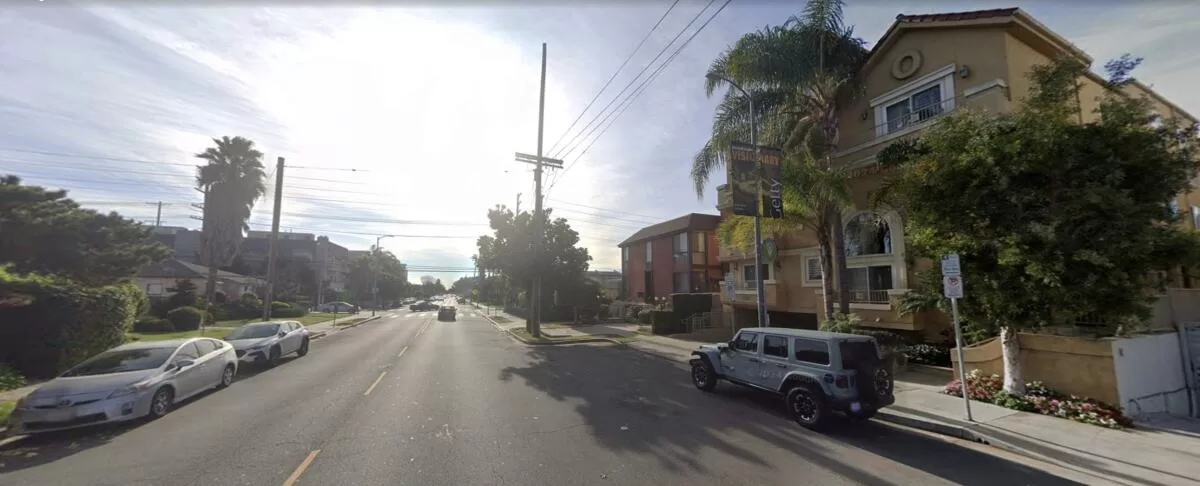Drive through enough neighborhoods in Los Angeles, and you might notice an odd phenomenon: In front of some newer apartment and commercial buildings, the street is slightly wider, and the sidewalk meanders around the indentation. If several properties on a block have been recently redeveloped, the street begins to look like a jigsaw-puzzle piece, widening and narrowing repeatedly.
That’s because new developments are often automatically required to dedicate part of their property to the city for road expansion — even if the road isn’t congested.
In theory, these spot street widenings are supposed to improve traffic flow. In practice, because development happens sporadically, the parcel-by-parcel widenings end up taking out mature trees, parkways and sidewalk space while providing little to no congestion relief.
Worse, the mandate needlessly drives up the cost of housing. In an analysis of L.A.’s street dedication ordinance published in 2016, UCLA urban planning professor Michael Manville surveyed several developers and estimated that the road widening cost them about $11,000 to $50,000 per unit.
“I’ve studied urban regulations for 20 years, and this is probably the dumbest regulation I’ve ever encountered,” Manville said recently.
Lawmakers are finally beginning to see spot street widening requirements for what they are: zombie regulations that don’t accomplish what was intended but are really hard to kill.
The state Legislature started trying to slay the zombie this year. Gov. Gavin Newsom signed a bill by Assemblymember Wendy Carrillo (D-Los Angeles) to limit local governments’ power to require that housing developers widen the roads in front of their projects. Agencies may still require street dedications if they can demonstrate their necessity.
A Google Street View image of 1747 S. Barrington Ave. shows the road widening in front of a new apartment building.
(Google Maps)
And this month, the Los Angeles City Council approved reforms designed to greatly reduce the number of spot street widenings. Proposed two years ago, the reforms will limit the circumstances when roadway widening is required. For example, the Bureau of Engineering will no longer automatically mandate spot widening in established neighborhoods.
The council also adopted a recommendation to change the municipal code so that road and sidewalk changes are required only if they’re needed for good street design, environmental reasons or to improve the experience of pedestrians and cyclists as well as motorists.
That’s important. For decades, Los Angeles prioritized drivers above all other road users — and vehicle speeds over safety and quality-of-life concerns.
The city began requiring street dedications in 1961. Even then, the Department of Building and Safety warned that the spot widenings would lead to irregular street alignments, “thus hindering maintenance, drainage, and traffic flow,” Manville wrote in his analysis. The idea was that properties would be continuously redeveloped and that the streets would eventually reach new, consistent widths.
Sixty-three years later, that hasn’t happened. But builders have been ordered to chop down trees, tear out grass parkways, move streetlights and power poles, and even reduce sidewalk space — and for what? A couple of extra feet of asphalt that may not even be wide enough for street parking.
Plus, there is increasing recognition that wider streets encourage motorists to speed, which is not ideal for safe, walkable and pleasant streets.
Los Angeles needs more housing and safer streets. The city can’t afford to keep zombie regulations that defeat those goals on the books.
